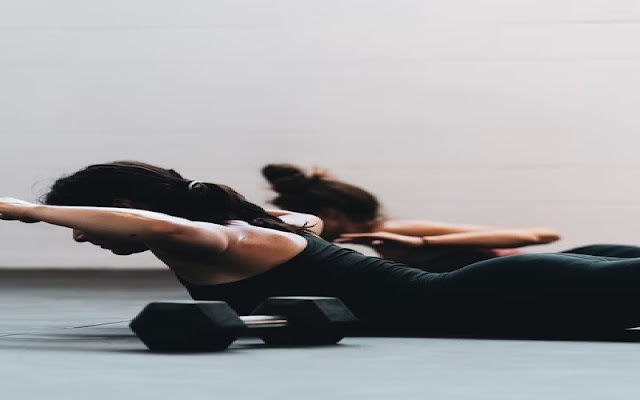Featured
- Get link
- X
- Other Apps
The Cons of Fitness Trackers And, More
Obsessive Behavior: One of the most significant concerns with fitness trackers is the potential for users to become obsessed with their data. Constantly checking step counts or heart rates can lead to unhealthy fixation and anxiety. This obsession can sometimes result in overtraining or excessive exercise.
Inaccuracy: Fitness trackers are not always perfectly
accurate. They may overestimate or underestimate the number of steps taken or
the calories burned. Relying too heavily on this data can lead to misguided
decisions about diet and exercise.
Privacy and Security Concerns: Fitness trackers collect a
wealth of personal data, including activity levels, sleep patterns, and even
heart rate. This data can be vulnerable to hacking or misuse, raising privacy
and security concerns. It's essential to choose a reputable brand and
understand how your data is handled.
Sedentary Behavior: Paradoxically, fitness trackers can
sometimes promote sedentary behavior. If users focus solely on reaching a
specific step count or exercise goal, they may neglect other aspects of a
healthy lifestyle, such as sitting less and engaging in a variety of physical
activities.
Overemphasis on Quantitative Data: Fitness trackers
emphasize quantitative data like steps taken and calories burned, often
overlooking qualitative aspects of health. Factors like mental well-being, the
quality of nutrition, and the individual's overall well-being are equally
important but not always captured by these devices.
How accurate are fitness trackers?
Fitness trackers are generally accurate at tracking basic
metrics like steps, distance, and heart rate. However, they are less accurate
at tracking more complex metrics like calorie burn and sleep quality. The
accuracy of fitness trackers can also vary depending on the brand, model, and
how you are wearing it.
Overall, fitness trackers can be a good tool for motivating
you to move more and tracking your progress over time. However, it's important
to keep in mind that they are not perfect and may not be 100% accurate.
How do fitness trackers measure heart rate?
Fitness trackers measure heart rate using a technology called photoplethysmography (PPG). PPG uses light to measure the amount of
blood flowing through your veins.
PPG trackers typically have a green LED light and a light
sensor. The green light is absorbed by the blood in your veins, and the light
sensor measures the amount of light that is absorbed. When your heart beats,
more blood flows through your veins, and the light sensor detects a decrease in
the amount of light that is absorbed.
PPG trackers can measure your heart rate at rest or during
exercise. However, they may be less accurate at measuring heart rate during
high-intensity exercise.
Here are some tips for getting the most accurate heart
rate readings from your fitness tracker:
Make sure the tracker is snugly fit around your wrist.
Wear the tracker on the top of your wrist, below the wrist
bone.
Avoid wearing the tracker over tattoos or scars.
Keep the tracker clean and dry.
If you are concerned about the accuracy of your fitness
tracker's heart rate readings, you can compare them to readings from a chest
strap heart rate monitor. Chest strap heart rate monitors are more accurate
than PPG trackers, but they can be less comfortable to wear.
Striking a Balance
To determine whether fitness trackers are a "bad
thing," it's crucial to find a balance between their advantages and
disadvantages. Here are some strategies for using fitness trackers in a healthy
way:
Set Realistic Goals: Avoid setting extreme or unrealistic
goals that can lead to obsession or overexertion.
Use the Data Wisely: Treat fitness tracker data as a tool,
not as the sole determinant of your health. Consider it alongside other
indicators of well-being, such as how you feel physically and mentally.
Balance Quantitative and Qualitative Data: Don't neglect
qualitative aspects of your health, such as stress levels, sleep quality, and
diet. Use your tracker to complement your understanding of your overall well-being,
not replace it.
Maintain Privacy Awareness: Research and choose fitness
tracker brands that prioritize data security and user privacy.
Stay Socially Connected: While competition and
accountability can be motivating, remember that exercise should be a personal
journey. Connect with others to stay motivated, but don't let comparisons
become unhealthy.
Fitness trackers know how many calories you burn?
Fitness trackers use a variety of factors to estimate how
many calories you burn, including:
Your heart rate
Your weight
Your height
Your age
Your gender
The type of activity you are doing
Fitness trackers use this information to calculate your
basal metabolic rate (BMR), which is the number of calories you burn at rest.
They then use your activity level to calculate how many calories you burn above
your BMR.
The accuracy of fitness trackers at estimating calorie burn
can vary depending on the brand, model, and how you are wearing it. However,
they can be a good tool for tracking your progress and getting a general idea
of how many calories you are burning.
Here are some tips for getting the most accurate calorie
burn readings from your fitness tracker:
Make sure the tracker is snugly fit around your wrist
Wear the tracker on the top of your wrist, below the wrist
bone.
Avoid wearing the tracker over tattoos or scars.
Keep the tracker clean and dry.
Enter your accurate weight and height into the tracker
settings.
- Get link
- X
- Other Apps
Popular Posts
Nutritional and Organoleptic Aspects of Goat milk
- Get link
- X
- Other Apps

Comments
Post a Comment